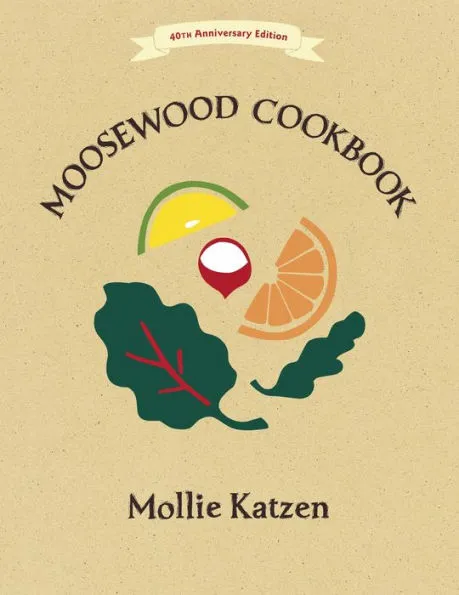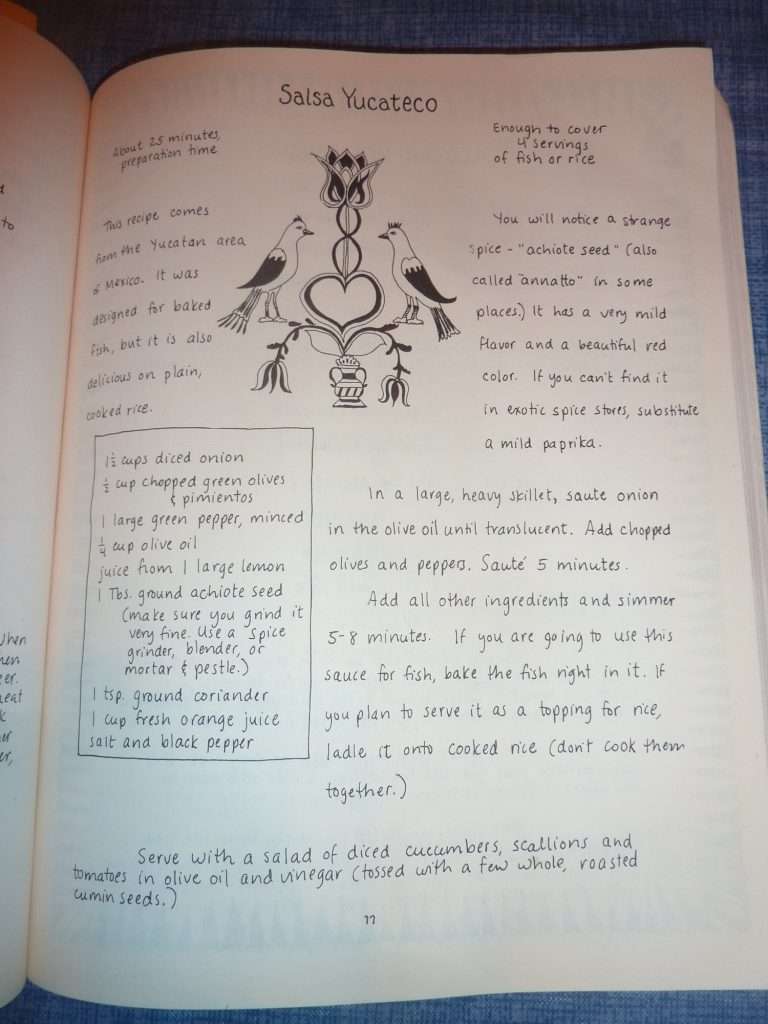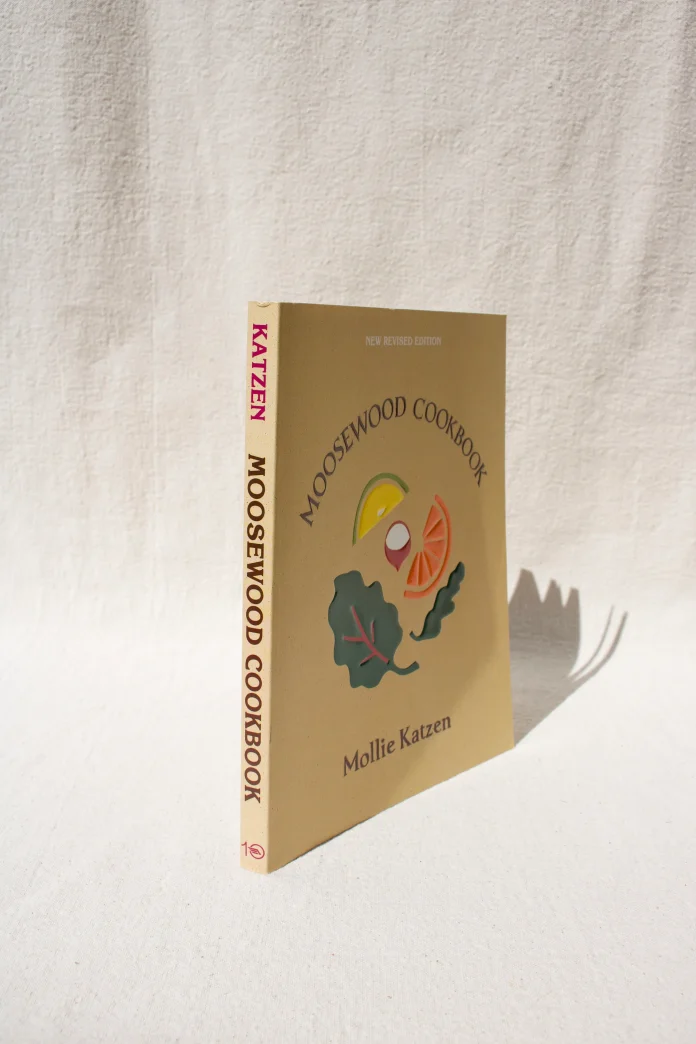As the “Moosewood Cookbook” turns 50, its influence on our understanding and appreciation of vegetarian food remains as strong as ever.
The first time I laid eyes on Mollie Katzen’s “Moosewood Cookbook”, I was 19 years old. I was a regular babysitter to two kids for a single mom named Nikki; they were transplants from the Pacific Northwest who had moved to town so that her ex could attend graduate school. Nikki had finished culinary school a few years earlier and had been working as a chef around town. But she had an entrepreneurial spirit (our legendary Grateful Dead parking lot kitchens are a story for another time), and before her relationship fizzled, her ex got her a unique gig at the university: cooking and selling vegetarian lunches in the school’s fine arts building. The university was private, so the dean waived the need for permits or health inspections and she had free rein to decide her menus and set her own prices. As the aromas of her delicious, inventive meals wafted through the building, she would draw lines of students and faculty queued up like a crowd waiting to get into the hottest new restaurant in town.
Like the diverse students and faculty, Nikki’s meals ranged from all continents: Brazilian black bean soup, Indonesian Gado-Gado, and hippie-fied Mexican enchiladas could all make appearances in the same week. For many customers, these were dishes they’d never heard of, and for many others, they were hometown classics. They were as much conversation starters and community builders as they were midday sustenance.

As the business grew, Nikki enlisted me, a young vegetarian with zero cooking skills, to help. I’d been vegetarian already for several years and somehow managed to stay alive. But outside of making pasta or peanut butter toast at home, the only meatless options in my sleepy Rust Belt hometown were at the local co-op (where I’d eventually work) and a few ethnic restaurants. Most restaurant meals for me back then were iceberg lettuce salads and french fries, sometimes it was just water or coffee. I was excited about the opportunity to learn how to make vegetarian food, and, as I found out, like Nikki, I had a bit of an entrepreneurial spirit myself.
On the first day in Nikki’s kitchen, I discovered that the secret to those sprawling lines of hungry fans more often than not came from the pages of the “Moosewood Cookbook” (and its sister books “The Enchanted Broccoli Forest” and “Sundays at The Moosewood Restaurant”.) Moosewood was a real place not all that far from where I grew up, and Katzen had inked the restaurant’s beloved recipes into the cookbooks that became vegetarian staples. This iconic book, with its hand-drawn illustrations and personal notes, was not only a guide for those venturing into vegetarianism but also influenced the way we think about and prepare vegetarian meals. Already familiar with tofu, I sadly, was not (yet) a fan. Katzen would change that. Within those pages, I would also come to discover and love tempeh, tahini, and tamari, and whole grains like millet and bulghur, as well as spices like coriander, chives, and cumin.
“Moosewood Cookbook”
The “Moosewood Cookbook” can be traced back to the early 1970s in Ithaca, New York, where a collective of like-minded individuals ran the restaurant named Moosewood. The restaurant rotated menus daily and dedicated every Sunday to the cuisine of one culture. It quickly became known for its innovative vegetarian dishes. It was in this creative and collaborative environment that Katzen began documenting recipes, which would later form the basis of her renowned cookbooks, despite not being vegetarian herself. “Moosewood” was not just revolutionary in its recipes but also its presentation. Katzen’s hand-written recipes, notes, and illustrations gave the book a personal and approachable feel, distinguishing it from the more formal cookbooks of the time. This personal touch, combined with the book’s emphasis on fresh, whole foods (and some of the most creative uses for raisins), resonated with readers, making it a bestseller and a staple in kitchens around the world.
Beyond its recipes and unique presentation, “Moosewood” played a pivotal role in the vegetarian movement, particularly in the United States. It arrived when awareness about health, nutrition, and the environmental impact of food choices was growing. The cookbook provided a practical and delicious way for people to align their eating habits with their values, contributing to the rise in popularity of vegetarianism. After “Moosewood,” Katzen would publish a dozen more cookbooks — but it’s that first one that continues to be a best-seller and synonymous with vegetarian food even as the industry’s rise and countless creative plant-forward chefs have made it more mainstream. According to the New York Times, as many as 30,000 copies of the original “Moosewood Cookbook” sell every year. “People have an emotional attachment to it,” Katzen told the Times in 2013. “I am still grateful and not at all jaded about what happened with the ‘Moosewood,’ the fact that it is still around the third and fourth generation.”
Katzen, with her unique approach to cooking and food presentation, challenged the prevailing norms of vegetarian cuisine. Until the “Moosewood Cookbook’s” publication, first self-published in 1974 and then revised in 1977, vegetarian recipes were often considered bland and uninspiring. Katzen’s recipes, however, were anything but. They introduced a richness and depth of flavor to vegetarian cooking that was previously unseen. Through her work, Katzen demonstrated that vegetarian meals could be both nutritious and exciting, opening up a new world of possibilities for home cooks.

“My early recipes were packed with rich ingredients like butter, cheese, sour cream, eggs, in large part to appease those who might be worried that the lack of meat would leave everyone hungry,” Katzen told the Times. But they’re easily adaptable to plant-based alternatives. And even though the recipes were dairy-heavy, Katzen always advocated for vegetables as the stars of the plate. The Moosewood restaurant recipes were always intended to elevate the plant kingdom, highlighting lesser-known ingredients in the U.S. like rutabaga or eggplant, and encouraging readers to find locally sourced produce. Katzen’s approachable descriptions of vegetables demystified them much in the same way Julia Child made French cooking more approachable. For Katzen, like Child, the goal was to connect the reader with their food, to understand it as something more than the sum of its parts. Mastery comes by way of familiarity, and “Moosewood” was the instruction manual for fist getting to know whole and unprocessed foods before cooking with them.
“It used to be that we didn’t trust food in packaging and now we don’t trust food not in packaging,” Katzen told Civil Eats in 2010 of the rise in ultraprocessed foods. “In the early 20th Century, the best job that a psychologist could have was working in advertising, which was really fashioned around selling and packaging food. The very first food packaging came from Heinz — they were pickling tomatoes, making horseradish, and experimenting with putting food in cans and jars. Somehow, they convinced folks to accept packaging and advertising — and we really received the message. They excelled at convincing people they needed something that they couldn’t live without it. And in fact, we came to not only trust it, but to think it was better and more desirable.”
Whether you like meat or not, everybody needs to fight against industrial food production. All meat eaters need to eat less meat and to eat more of a plant-based diet. We forget we can sit down at the same table and do this together.
– Mollie Katzen
The “Moosewood Cookbook” turned that idea on its head and encouraged people to get back to cooking from scratch, particularly as women and men in the ’70s and early ’80s shook off the “government cheese,” canned tuna and vegetables, white bread, mayonnaise, boxed cake mixes, and Jell-O molds they grew up with in the 1950s and ’60s. The cookbook’s impact on the culinary world since has been undeniable. It not only introduced countless individuals to the joys of vegetarian cooking but has also inspired chefs and cookbook authors to explore and innovate within the realm of vegetarian cuisine, birthing such staples as the Tofurky roast, granola, and dairy-free milk. Katzen’s approach to cooking and her emphasis on fresh, flavorful ingredients have become guiding principles for those looking to create satisfying and healthy vegetarian meals. The cookbook’s legacy is not just in its recipes, either, but it has become a catalyst for change, contributing to the broader conversation about food, health, and sustainability. Katzen has leveraged her platform to advocate for campaigns like Meatless Monday.

“We’ve gone so far away from the source of our food,” Katzen told Civil Eats. “There was a time when we knew our farmers and where our food came from. But we’ve been greatly urbanized. By the time I became a cookbook author, I began working in an urban pre-school, planting vegetables so the children could see where their food comes from. I once asked them where they thought pizza came from and they said it came from a telephone — because that’s how they got pizza, from a delivery service. So I took them on a little field trip to a working farm called the Pizza Farm — it had an herb garden with oregano and thyme, they grew wheat and had a cow. Then we made a pizza together. That kind of literacy is essential,” she said. “Whether you like meat or not, everybody needs to fight against industrial food production. All meat eaters need to eat less meat and to eat more of a plant-based diet. We forget we can sit down at the same table and do this together.”
While I knew pizza didn’t come from the telephone, my food literacy at 19 wasn’t much better than those pre-schoolers before I discovered Katzen’s recipes. The cookbook became a lifeline to this young vegetarian in search of real food, and over the decades since, a bible of sorts and a place for comforting inspiration. When I was just 20, Nikki decided to move back to the Northwest; I bought the business from her — pots, pans, and cookbooks— and would go on cooking for the university for several more years. Every week, I’d spend hours flipping through the pages of Katzen’s cookbooks to find delicious inspiration, and each meal was as much of a discovery for me as it was for my customers. While I eventually stopped the lunch service, I never stopped cooking from “Moosewood.” I still consider my tattered dog-eared copy as essential to my kitchen as my cookware or stove.
“There is no specific dogma attached to the Moosewood cuisine,” Katzen writes of the restaurant in the 1977 version of the cookbook. “Perhaps most of Moosewood’s customers are not strict vegetarians (or vegetarians at all), but they are drawn to the restaurant for the experience of a meal cooked with skill and care.” And 50 years later, that’s still the case, at least in my kitchen — and, it seems, in millions of others, too.
Related on Ethos:


